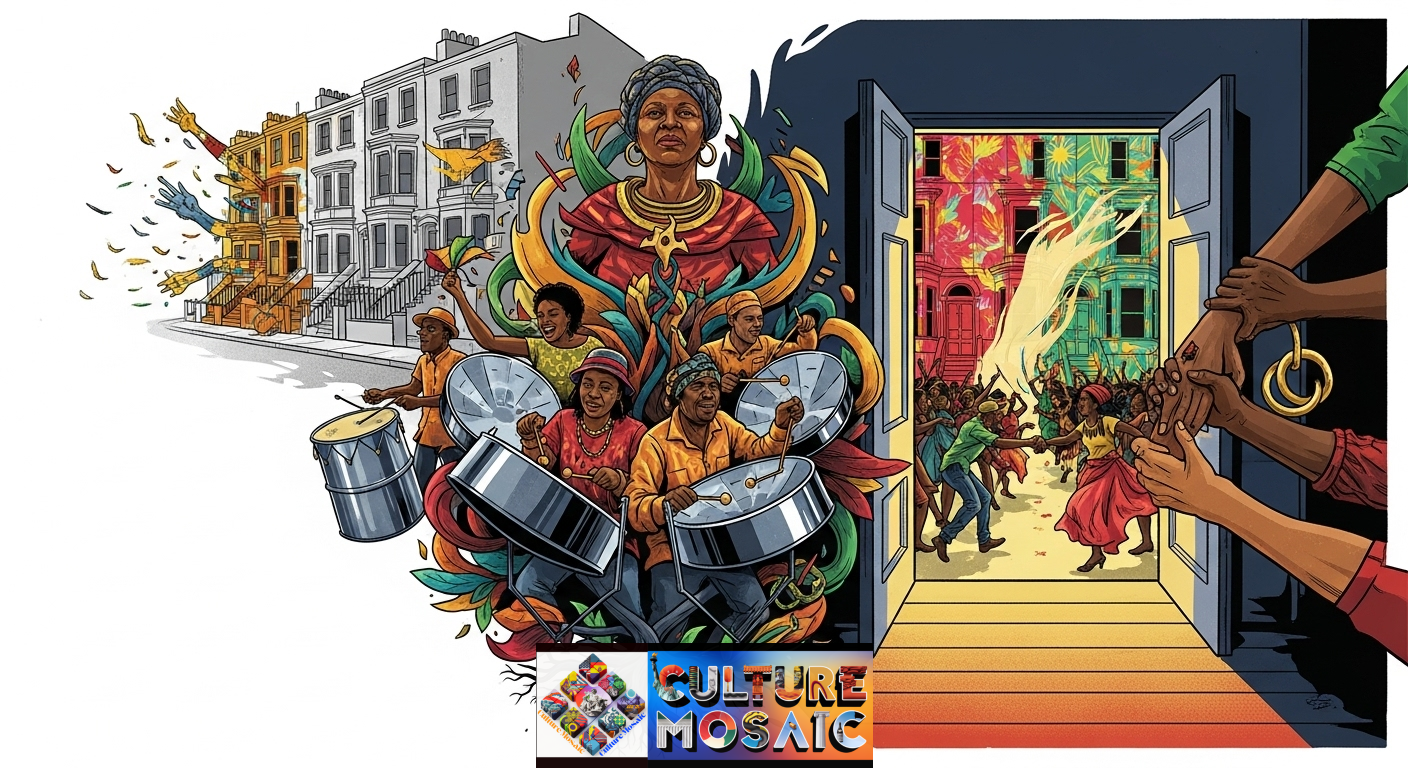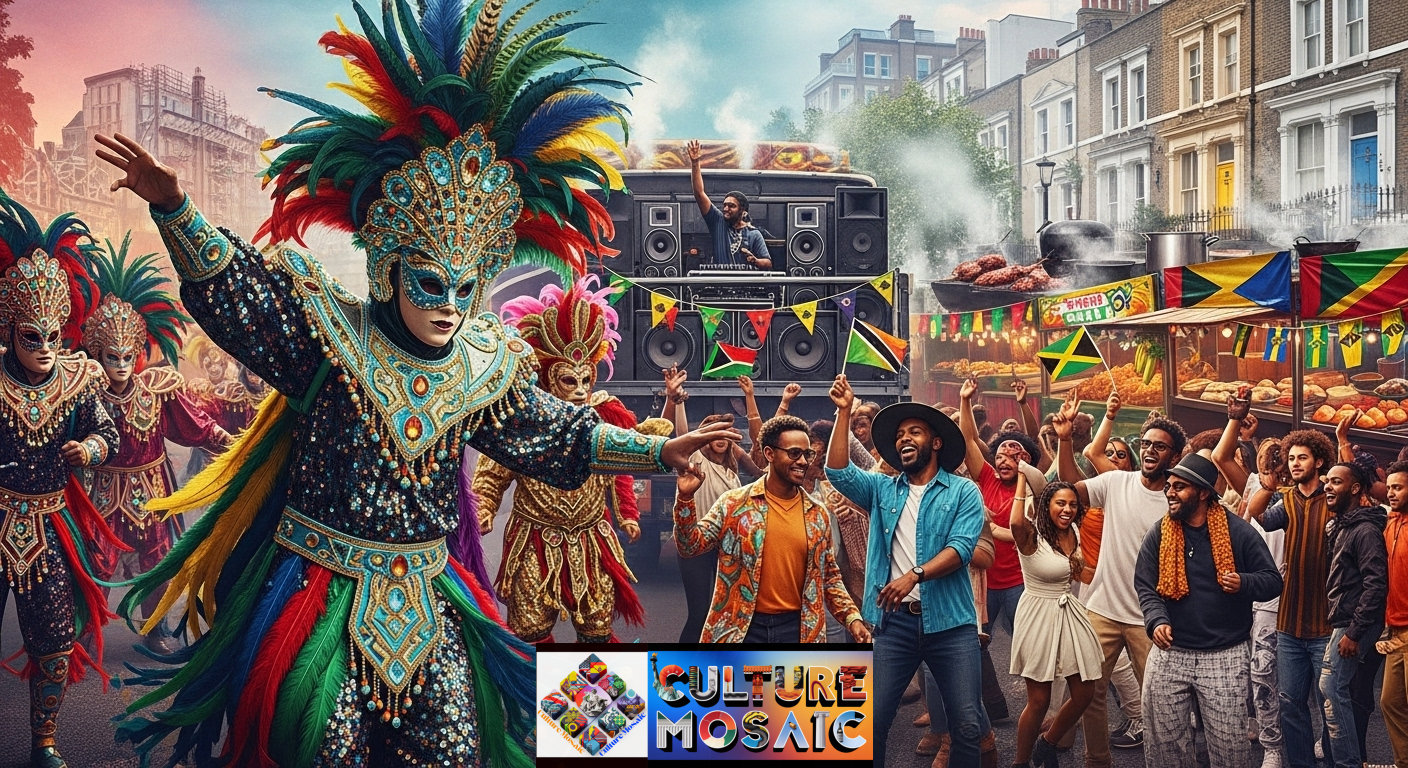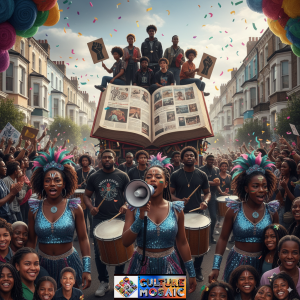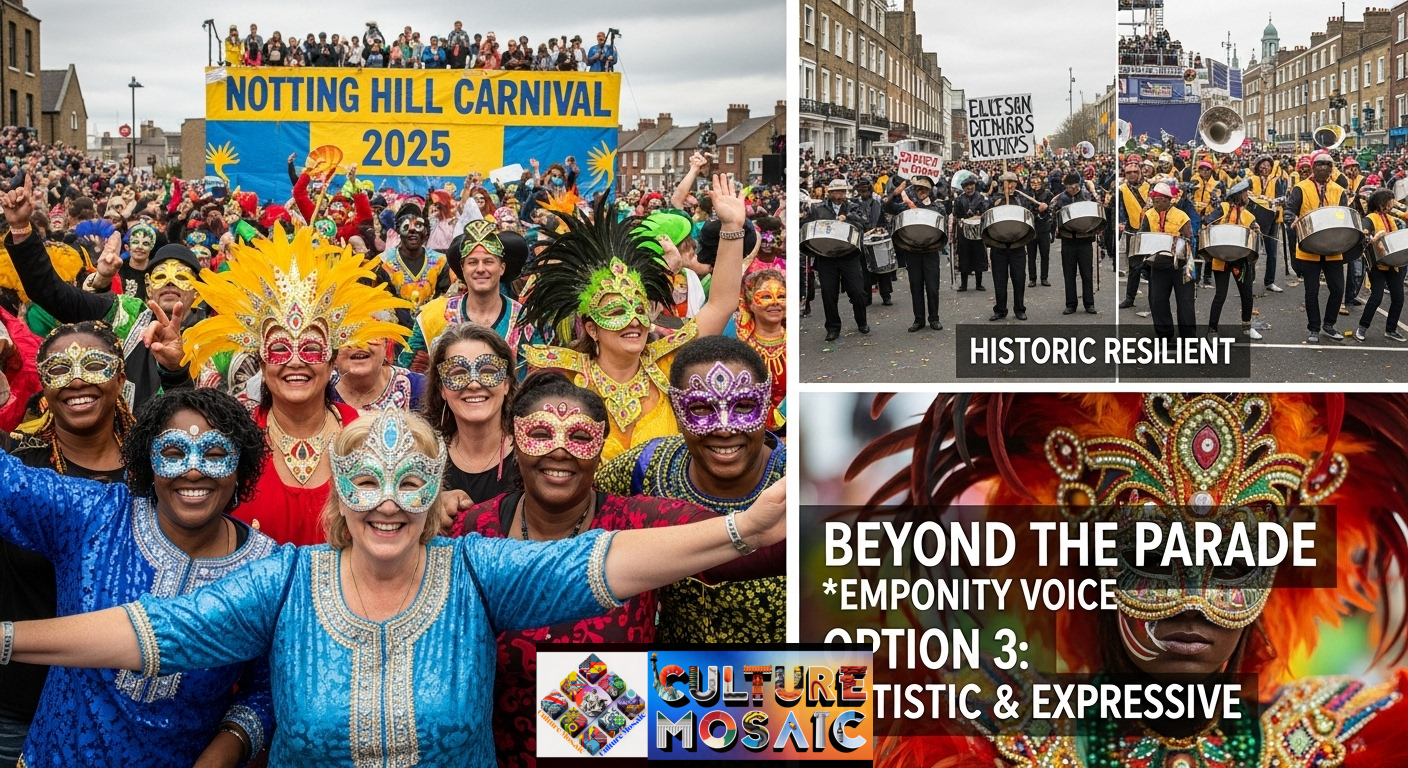Introduction
In August 2025, Notting Hill hosted its famous Carnival, the largest street festival in Europe, which exploded with lively energy. Beyond its vibrant costumes, to woo the rhythm and infectious happiness, the carnival serves as a powerful platform for community voices, exposing social movements and flexibility. This article is the origin of the carnival in response to racial adversity, its development as a celebration of the Caribbean culture, and its ongoing role in addressing contemporary challenges, such as gentrification in Notting Hill.
The Roots: A Response to Racial Tensions

Notting Hill Carnival 2025 builds on an inheritance that began in the late 1950s, a turbulent era in West London. In 1958, the Notting Hill race riots, surrounded by racial stress between white residents and Caribbean immigrants, exposed deep social division. In response, Trinidadian activist Claudia Jones held the first Caribbean Carnival in 1959 at St. Pancras Town Hall. Conducted indoors for security, the purpose of this incident was to unite communities through music, dance, and cultural pride.
Claudia Jones’ vision: Known as the “Mother of Carnival”, Jones used the culture as a tool for empowerment. His indoor carnival demonstrated the Caribbean traditions, promoting solidarity among immigrants facing discrimination.
From inside the house to roads: until 1966, community activist Rhaune Laslett brought a multi-cultural festival to fix the racial partition, bringing the carnival on the streets of Notting Hill. The steel band and local residents attended, laying the foundation for today’s Notting Hill Carnival 2025.
These early programs were the functions of disobedience, which voiced a marginalized Caribbean community and convert Notting Hill into a platform for cultural resistance.
A Celebration of Caribbean Culture

Notting Hill Carnival 2025 will draw over a million attendees to celebrate Caribbean heritage through music, food, and art. Key elements include:
-
Masquerade Bands (Mas): Vibrant costumes and choreographed dances, inspired by Trinidadian traditions, tell stories of heritage and liberation. Bands like Mangrove and Ebony Steelband will bring their narratives to the 2025 parade.
-
Music and Sound Systems: From calypso and soca to reggae and dancehall, sound systems like Aba Shanti-I and Channel One will amplify Caribbean rhythms, creating spaces for connection.
-
Culinary Traditions: Street stalls will serve jerk chicken, roti, and plantain, offering a taste of the Caribbean that unites diverse crowds.
These elements do more than entertain—they preserve cultural identity for the Caribbean diaspora and educate visitors about its richness. For many, Notting Hill Carnival 2025 is a homecoming, a space to reconnect with roots and assert pride.
A Platform for Civic Voices

Notting Hill Carnival 2025 is more than a festival; it’s a platform for civic engagement and social commentary. It amplifies community voices in several ways:
-
Addressing Social Issues: Historically, the carnival has confronted issues like police brutality and racial inequality. In the 1970s, clashes with police sparked dialogue about community relations. In 2025, organizers will continue to balance safety with the event’s rebellious spirit.
-
Community Organizing: Run by volunteers and groups like the Notting Hill Carnival Enterprise Trust, the 2025 event ensures local voices shape its direction, advocating for inclusivity.
-
Youth Empowerment: Initiatives like the Young Warriors mas band and the new Junior Panorama in 2025 engage younger generations, teaching them about their heritage through creative expression.
By centering community voices, Notting Hill Carnival 2025 fosters belonging, especially for those feeling marginalized in a changing neighborhood.
Navigating Gentrification
A working class is one of the challenges of London’s most prosperous neighborhood, noting the hill inns to note the carnival in 2025 from the immigrant-water region. Gentrification has raised property prices, displaced inhabitants for a long time,, and threatened the cultural fabric of the area.
-
Rising Costs and Displacement: Many Caribbean families who shaped the carnival’s early years can no longer afford Notting Hill. This risks disconnecting the 2025 event from its roots.
-
Commercial Pressures: As Notting Hill’s global fame grows, partly due to the 1999 film Notting Hill, there’s pressure to commercialize the carnival. Organizers of Notting Hill Carnival 2025 prioritize local vendors and performers over corporate sponsors.
-
Community Response: The carnival reclaims public space, with events like the Panorama steel band competition at Emslie Horniman’s Pleasance on August 23, 2025, reinforcing local ownership.
Local voices, from mas band leaders to residents, use Notting Hill Carnival 2025 to advocate for affordable housing and cultural preservation, ensuring the community’s legacy endures.
Fostering Belonging in a Divided World
In a time of social and political division, Notting Hill Carnival 2025 remains a beacon of unity. It brings together Caribbean, British, and global visitors in a shared celebration, reflecting its founding ethos of bridging divides.
-
Intergenerational Connection: Elders share stories of the carnival’s origins, while younger attendees bring fresh energy through new music and art.
-
Cross-Cultural Exchange: The 2025 carnival will attract diverse crowds, fostering dialogue. Non-Caribbean locals joining mas bands will learn about Caribbean traditions firsthand.
-
Global Influence: The carnival’s model inspires events like Toronto’s Caribana, spreading its message of community resilience worldwide.
By creating an inclusive space, Notting Hill Carnival 2025 reminds attendees of the power of collective joy and belonging.
Practical Tips for Experiencing Notting Hill Carnival 2025
To engage with Notting Hill Carnival 2025’s community spirit, consider these tips:
-
Plan Your Visit: The carnival runs August 23-25, 2025. Saturday features Panorama, Sunday is Family Day, and Monday hosts the main parade. Check nhcarnival.org for updates.
-
Explore Key Areas: Visit Westbourne Park for sound systems, Ladbroke Grove for parades, or Portobello Road for food stalls. Use Notting Hill Gate or Ladbroke Grove stations, but expect crowds.
-
Support Local Vendors: Buy from Caribbean food stalls or small businesses to support the community economy.
-
Learn the History: Explore the Museum of London’s online archives or read about Claudia Jones to understand the carnival’s roots before attending.
Conclusion
Noting Hill Carnival 2025 exceeds a parade—it is a vibrant will for community voice. In opposing racial injustice to its role as a global festival of Caribbean culture, Carnival claims space and claims identity. Gentrification in the form of Notting Hill leads to the 2025 incident, increased local voices, advocates for cultural protection, and concerns. By combining happiness, resistance, and community, Notting Hill Carnival 2025 transformed the streets of London into a powerful platform for unity and expression.
FAQs
What is the history behind Notting Hill Carnival 2025?
The carnival, rooted in 1959 by Claudia Jones to counter racial tensions, became a street festival in 1966. In 2025, it continues to celebrate Caribbean heritage.
How does Notting Hill Carnival 2025 amplify community voice?
Through mas bands, sound systems, and local organizing, the 2025 carnival empowers voices on issues like equality and cultural preservation.
How does Notting Hill Carnival 2025 address gentrification?
The 2025 event reclaims Notting Hill’s streets, supports local vendors, and highlights Caribbean identity amid rising property costs.
When and where is Notting Hill Carnival 2025 held?
It takes place August 23-25, 2025, in Notting Hill, with parades on Ladbroke Grove, sound systems at Westbourne Park, and food stalls on Portobello Road.
How can visitors engage with Notting Hill Carnival 2025?
Attend Family Day on August 24, support Caribbean vendors, explore sound systems, and learn about the carnival’s roots via local archives.

